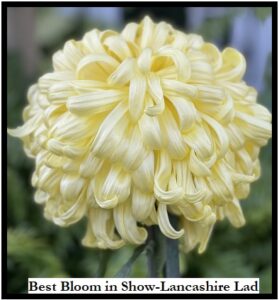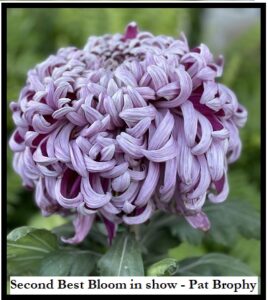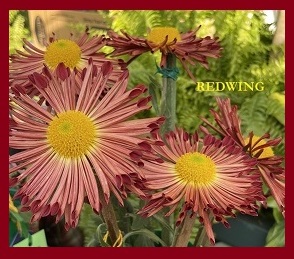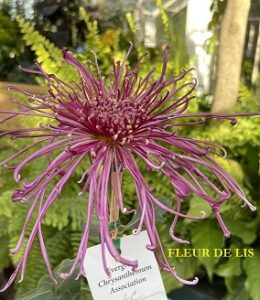MEETING OF THE ECA – THURSDAY June 11, 2009 at 7 PM at the Seattle Police Athletic Association Office (SPAA) site at 11030 East Marginal Way South, Tukwila.
TELEPHONE COMMITTEE MEMBERS – Contact your lists early in June as your calls do help to increase attendance.
Looking forward to seeing all of you at the meeting
YEARBOOKS – The 2009 ECA Yearbooks have been distributed. Notify the secretary if you did not receive your yearbook.
Correction to Yearbook: The cell phone # for Heinz and Gloria Pieniak is 206-909-7273
SUNSHINE: If anyone has “Sunshine” to report, please let Jill Aldrich (206-878-8010 or [email protected]) know and she will send a card.
GARDEN TOUR: Will be at Richard and Julie Pozniak’s on August 8th, 2009, Saturday.
Koji Norikane will be celebrating his 95th on June 1st, 2009. He has been married to his wife Mary, 67 years.
Follow-up on “Messenger”
(From News from King’s Mums) We have been using Messenger for six years now. We have found that in addition to increasing growth and general health, we have been able to reduce the amount of fertilizer needed by half. Messenger is applied with our soluble fertilizer at a rate of approx. 2 oz. To 50 gallons in 25 pounds of 20-9-20 concentrate fertilizer. This is then diluted at 100-1 through our injector system. This then becomes only a very trace amount of Messenger. All plants become more efficient in their use of nutrients with traces of Messenger.
……………………………………………………………………………………………………..
Ron Elliott, President sent a message via e-mail to me to read at our May 14th meeting, I didn’t look at my e-mail till after the meeting.
“I went to the Portland Mum club sale carrying some 400 cuttings for sale at Portland nursery. I gave away some of our new stock to the Top growers plus some of my bush mums about 50 total. The club had 2 growers bring mums in plus ours, selling the cuttings for $4.00. I did not ask how much $ they made, but did ask for a donation to our club for the plants. They said at the next board meeting they will bring it up. They was real excited to have an influx of different mums to pick from. I had to explain the British numbering system and how we tagged our mums. I came back with 200 cutting that I took to the Tacoma Mums club sale place. Thanks to all the people who helped with the cuttings. Thanks, Ron”
PLANT CULTURE and SUPPLIES – Be sure to have soilless available for your top-dressing needs later this summer. Preorder soilless mix, by contacting Don Stark (253) 631-6321 for pick up at the meeting.
Supplies available:
Soilless Potting mix (preorder to assure availability)
Pumice
Mid Season Mum fertilizer (20-10-20)
Marathon Systemic Insecticide for aphid control
Twistems
Cultural recommendations for June are similar to May and will be discussed at the meeting.
If you prefer to receive future monthly notices by email only rather than US mail, please send an email to [email protected].
“TO DO LIST” for May and June (revised DRS 4/25/05)
Stopping:
Most plants are stopped April 15 through June 1, including the Early English classes. Keep your stop list handy and follow it rigorously. The calendar doesn’t move backwards. For #1 and #2 varieties the English literature recommends a fairly hard pinch; that is pinching 6-8 leafs down from the growing tip. For the incurves, #3, #13, #23 pinch the smallest portion of the growing tip to get more uniform growth of the laterals. For all varieties, fertilize 1-2 weeks before pinching to produce more laterals. This is especially true for the Fairweathers.
Final Potting into 8”, 9” or 10” pots. (Or maybe in the garden soil)
Preparation
Wash pots (in mild Clorox solution) then rinse in clear water.
Prepare potting mix. – Soil less users, add another 5-10% of screened pumice or Perlite to improve drainage. Also at this final stage, I recommend adding Cedar Grove compost or other fresh compost and a small amount of well-composted horse manure. This results in a mix of 6 parts M&R soil less, 4 parts compost, 1 part pumice, and small amounts of horse manure and Alfalfa meal.
Water plants in the 6” pots 1 day before repotting.
Potting (Pot on when the ring of roots around the bottom of the pot is semi root bound.)
Cover drain holes in bottom of clay pots with a piece of broken crock to keep drain clear
Put a layer of broken sod or course pumice in the bottom of pot, then cover with 1 or 2 inches of the final (9”) mix.
Place the 6” root ball on top of the 9” mix and fill around with the 9” mix. The top of the root ball should be 1+ inches below the top of the pot.
Do not pack the mix except as necessary to hold the plant and stake in place. Stake with shingle or bamboo stick.
Add Marathon Systemic at this time to control black aphids. Sprinkle ½ tspn. Marathon on top of the potted plant, add a thin layer of mix over the top, then water moderately.
Note: When potting on occurs after June 1, consider dropping down one pot size pot because the roots will not have time to fill the bigger pots. # 1 & #2 cultivars, 9” max, 8” could be used. #3s, 8” max.
Feeding and pest management
After 3 weeks in final pot start summer feeding program.
1 to 2 Tsp. Peters 20-10-20 per gallon water, once a week.
Some plants will thrive with the heavier solution, while others may not like so much fertilizer. Watch the leaves to gauge the fertilizer needed. If leaves become hard and curl up you are overfeeding. If leaves were somewhat weak and lighter green then more fertilizer would help.
Miracle Grow is also used quite successfully by some during this summer stage.
If plants are yellowish, first try drying them out. If drying the plant is unsuccessful, feed ½ tsp. Epsom Salts per plant. Leaf feeding of liquid iron such as Greenall or Sequesterine also helps green up the plant. Follow product directions. Do not over feed Liquid Iron.
Review your pest management program every 2 weeks,
Marathon systemic is the most effective black aphid control.
Diazinon, Black Leaf 40 if available, and most rose insecticides are somewhat less effective, and require spraying every 2 weeks, as they are contact insecticides.
Spray every two weeks with a fungicide. Ortho Funginex
is recommended. Other fungicides will work well if used regularly. If fungus gets away and is growing fast, a fungicide used to control early blight in tomatoes will really shut it down. I use Monterey “Bravo” for such control.
Lateral Control
As side laterals develop after the final pinch, select the number of lateral to carry through the summer and remove all other side shoots. Generally the topmost lateral below the stem break is removed, as it is the weakest lateral structurally and easily broken off by accident. At this early stage you should carry 1-2 more lateral than you want at the bloom stage. An old saying goes: “I grow 2 for me and one for the bug.” Surplus laterals are removed later in the summer using the following guide.
For #1 & #2 cultivars, carry 2 or 3 laterals initially, cull to 1 or 2 in Aug.
For #3 cultivars, carry 5 laterals and cull Sept. or Oct.
For #4 & b#5 cultivars, carry 4 to 5 laterals and cull to 2 to 3 in Sept.
For Earlies (13-15 and 23-25) carry 4-5 laterals and cull to 2-3 in Sept.
For Spiders, Quills, Spoons, Singles etc. follow the guide for #4 and #5.
Note: Cutting back to the few laterals seems to be a most difficult task for the
Novice. You must do it however if you wish to get large blooms.
Staking.
By now all plants will require staking. A 16-24 in stake should be placed along the main plant stem and tied to it to support and protect the plant. As the side laterals develop it will be necessary to add longer stakes that can support each lateral all the way to bud development. Care must be exercised so as to not spread the new laterals too far apart when staking, as one or more could be broken off. In other words let the laterals grow till they can be easily tied to the new stakes.
ARCHIVES
Best Bloom in Show – Lancashire Lad

Second Best Bloom in Show – Pat Brophy

Peoples Choice – Redwing

Peoples Choice – Fleur De Lis

WHAT WE GROW AND HOW WE GROW THEM
Pages
- ECA Anemone Varietals
- ECA Cushion Varietals
- ECA Incurve Varietals
- ECA Intermediate Incurve Varietals
- ECA Large Exhibition (Irregular Incurve) Varietals
- ECA Medium Exhibition Varietals
- ECA Quill and Spoon Varietals
- ECA Reflex Varieties
- ECA Single Varieties
- ECA Spider Varietals
- Evergreen Chrysanthemum Association
Meta
Archives
